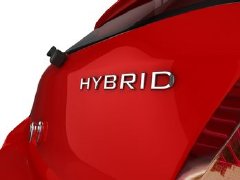Jul 8 2009
By optimising magnets, hybrid and electric cars can be made economically competitive. This is the finding of a research project currently underway at St. Pölten University of Applied Sciences (Austria).

The project is examining the ideal composition and structure for high-performance permanent magnets intended for use in cars. These criteria can help conserve raw materials and can be identified quickly and without major expense thanks to the use of simulation methods and the expertise of renowned material researcher Prof. Thomas Schrefl, who has recently joined the team at St. Pölten University of Applied Sciences.
Hybrid and electric cars need high-performance permanent magnets to get the best out of them. However, in order to ensure they can stay the pace in economic terms, they need "optimal" high-performance permanent magnets. The magnetic material currently in use requires a high proportion of rare earths, which are both expensive and in short supply. Hybrid and electric engines will only be able to boost their economic competitiveness if the amount of certain rare earths required is reduced.
Under the leadership of Prof. Thomas Schrefl, this is precisely what the "Green Cars" research project being undertaken by St. Pölten University of Applied Sciences aims to achieve. State-of-the-art computer simulation methods are being applied to examine how the chemical composition and structure of a magnet influences its performance. This information will then be used to identify ways to optimise the magnetic material so that it requires fewer expensive raw materials, yet continues to deliver the best possible performance.
Overall, an electric or hybrid drive contains around two kilos of magnetic material. At present, neodymium iron boron magnets form the basis of this. These have considerably less mass than conventional magnets, but deliver the same level of performance. In order to ensure the magnetic properties are retained even at high temperatures - such as those that occur within a car - the rare earth element neodymium is partially replaced by dysprosium, another rare earth element. This increases the coercive force of the magnet or, in other words, its stability against demagnetisation. However, having recently returned to Austria to join St. Pölten University of Applied Sciences, renowned magnetism expert Prof. Schrefl explains that this creates a severe problem: "Compared to neodymium, the proportion of dysprosium in the ore is less than 10 percent. However, the high-performance permanent magnets currently used for hybrid and electric cars contain up to 30 percent dysprosium. In the long term, this will prove problematic when it comes to raw materials, particularly if you consider that, in just a few years, all new cars will be fitted with a hybrid or electric drive."
In cooperation with the University of Sheffield (UK), the "Green Cars" project aims to determine how the proportion of dysprosium can be reduced without compromising the thermal stability of the magnets. In this respect, the proven expertise of St. Pölten University of Applied Sciences in the field of computer simulation is a key advantage. Applied in conjunction with the finite element method, this is helping to reveal the internal workings of a magnet. The computer is used to break down complex structures into individual elements so that they can be evaluated. Prof. Schrefl explains: "We reconstruct the magnet on the computer and break the granular structure of the magnet down into finite elements. By breaking down the microstructure into millions of tetrahedrons and prisms, we can recreate the spatial distribution of the metallic phases within the magnet in a computer model. We can then use the computer to simulate the effect that changes in the proportion of dysprosium have on the coercive force of the magnet." The finite element method has already been applied in the automotive industry for carrying out computer-based crash tests and wind tunnel tests.
The Green Cars project continues St. Pölten University of Applied Sciences long - and very successful - tradition of using computer simulation to promote sustainable development. In 2008, the Green Dynamics project was presented with the Green IT Award and the Environmental Award of the City of Vienna. Green Cars is also echoing this success - international magnet manufacturers have already expressed considerable interest in the project and have invited St. Pölten University of Applied Sciences to work in cooperation with them.